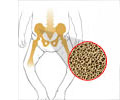One can stick to such light exercises such as ironing and washing dishes and hope to cut the risk of diabetes and heart disease, an Australian study reveals.
One can do nothing more than ironing one’s own clothes or wash dishes or even walk up to meet a colleague instead of e-mailing could be a sure way of fighting diabetes and heart disease.
A study of 173 southeast Queensland adults found the longer they spent doing low-intensity activities – as simple as standing while talking on the phone rather than sitting – the lower their blood sugar levels.Population health researcher Genevieve Healy, of the University of Queensland, said the association between light exercise and reduced blood glucose was irrespective of how much moderate to vigorous activities they did.
"This research confirmed what we already know – that the more time spent in moderate to vigorous activities is associated with lower blood glucose levels," Mrs Healy said.
"And the more time we're sedentary, such as sitting down watching television, the higher blood glucose levels.
"What this study shows for the first time is that being on your feet and not sitting is associated with beneficial health outcomes."
Mrs Healy suggested even activities such as folding clothes while watching television may have positive effects on blood-sugar levels.
Advertisement
Chronically high blood glucose concentrations – or hyperglycemia – are recognised as a precursor of type 2 diabetes and are associated with an elevated risk of heart attacks and strokes.
Advertisement
Participants in the research, aged between 30 and 87, wore a device known as an accelerometer during waking hours for a week, allowing researchers to measure the amount and intensity of their physical activity.
None had been diagnosed with diabetes at the time of the study and were recruited from the Australian Diabetes, Obesity and Lifestyle (AusDiab) Study in 2004/05.
The International Diabetes Institute study last year revealed 100,000 Australians were developing diabetes annually, doubling their chances of dying within five years.
Source-Medindia
GPL/S











